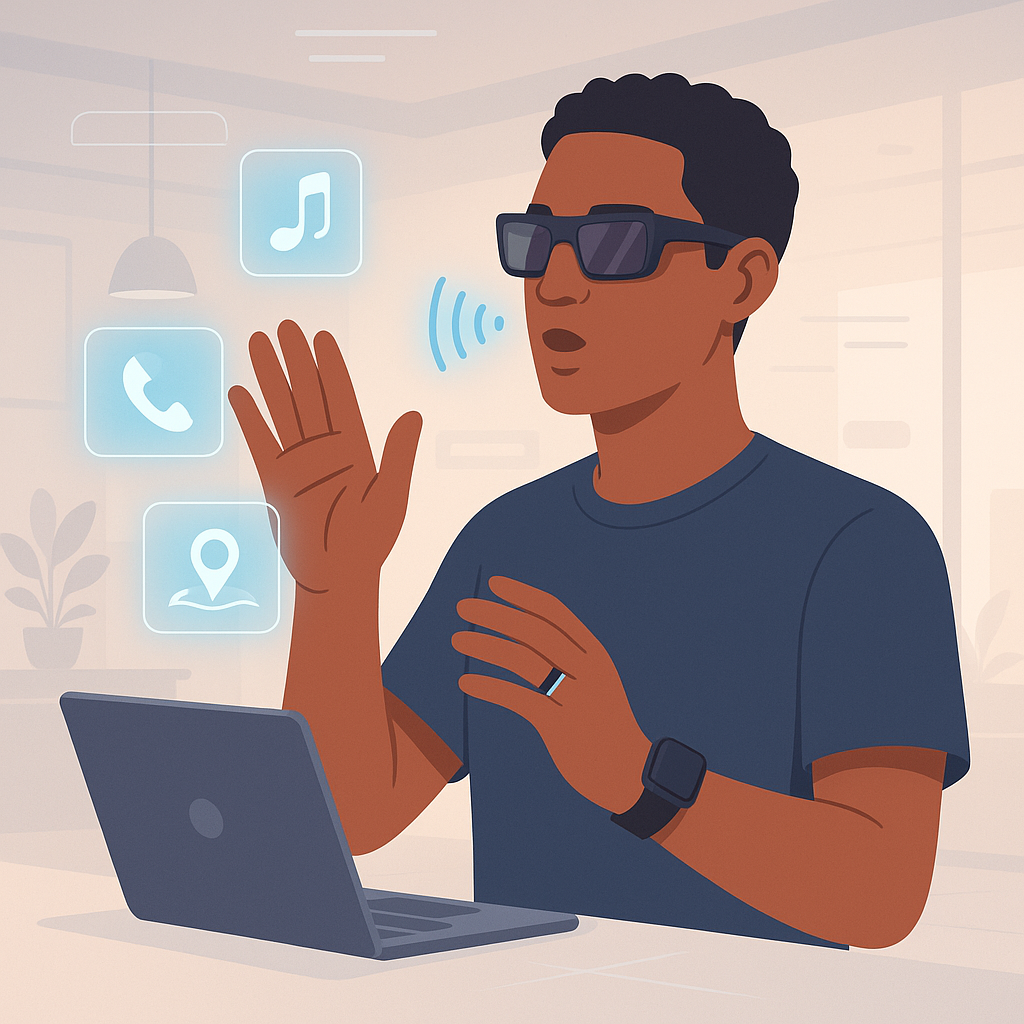🎙️ Voice and Gesture Control in Wearables – Easy Guide
Wearable tech such as smartwatches smart rings, and AR glasses are becoming more intelligent and user-friendly. A standout feature in 2025 allows users to operate these gadgets hands-free.
Let’s explain this in plain language.
🤔 What Is Voice and Gesture Control?
Voice and gesture control enables you to give instructions to a device using your voice or hand movements.
- Voice Control = You speak to the device (e.g., “Play music” or “Call John”)
- Gesture Control = You move your hand or fingers in a specific way (e.g. swipe in the air or tap your fingers)
This simplifies gadget use — when your hands are occupied.
🛍️ Where Do We See This in Wearables?
These features now appear in many wearable devices:
👓 Smart Glasses (Like Meta XREAL)
- You can nod your head, swipe in the air, or speak to control music, answer calls, or open apps.
- Some even track your eyes to detect where you’re looking.
💍 Smart Rings (Like Oura, Ultrahuman)
- Control actions by tapping your fingers or moving your hand . This lets you track workouts or check notifications.
⌚ Smartwatches (Apple Watch, Galaxy Watch)
- Wake the watch by lifting your wrist.
- Scroll or go back by flicking your wrist.
- Set timers, reply to messages, or check the weather using your voice.
👍 Why It’s So Useful
Voice and gesture control has a lot of benefits:
- You don’t need to interact with small screens.
- It works well when you can’t use your hands (like during cooking or exercise).
- People with disabilities or limited mobility find it very useful.
It enables wearable use to be straightforward and intuitive — similar to speaking or gesturing.
⚠️ What Are the Challenges?
You should consider a few things:
- Voice control has limitations in noisy environments
- Gestures can be misinterpreted at times
- Privacy: Some individuals have concerns about microphones that are always on
Despite these minor challenges, companies are improving the technology.
🚀 What’s on the Horizon?
The future of voice and gesture control looks promising. We can expect:
- More intelligent AI with better understanding of your voice and movements
- Wearable devices that adapt to your habits and routines
- Longer-lasting batteries for devices that listen or watch
In the near future, we might manage our entire day by speaking or making hand movements — without the need for screens!
🧠 Closing Thoughts
Voice and gesture control has an influence on making wearables smarter and easier to use. In 2025, it’s not just about what your device can do — it’s about how smoothly you can use it.
